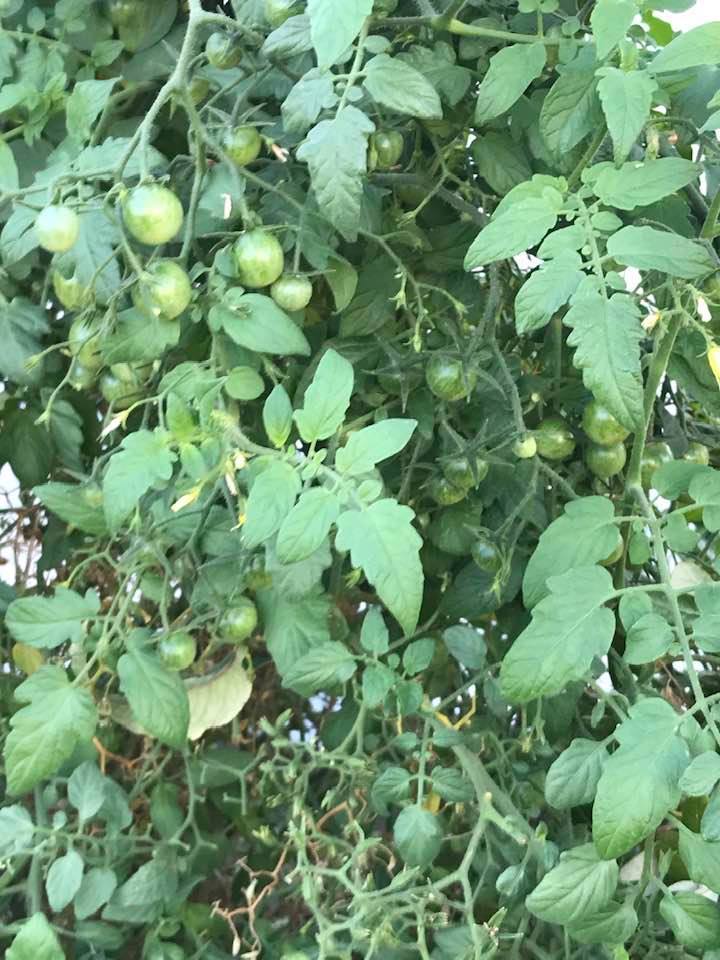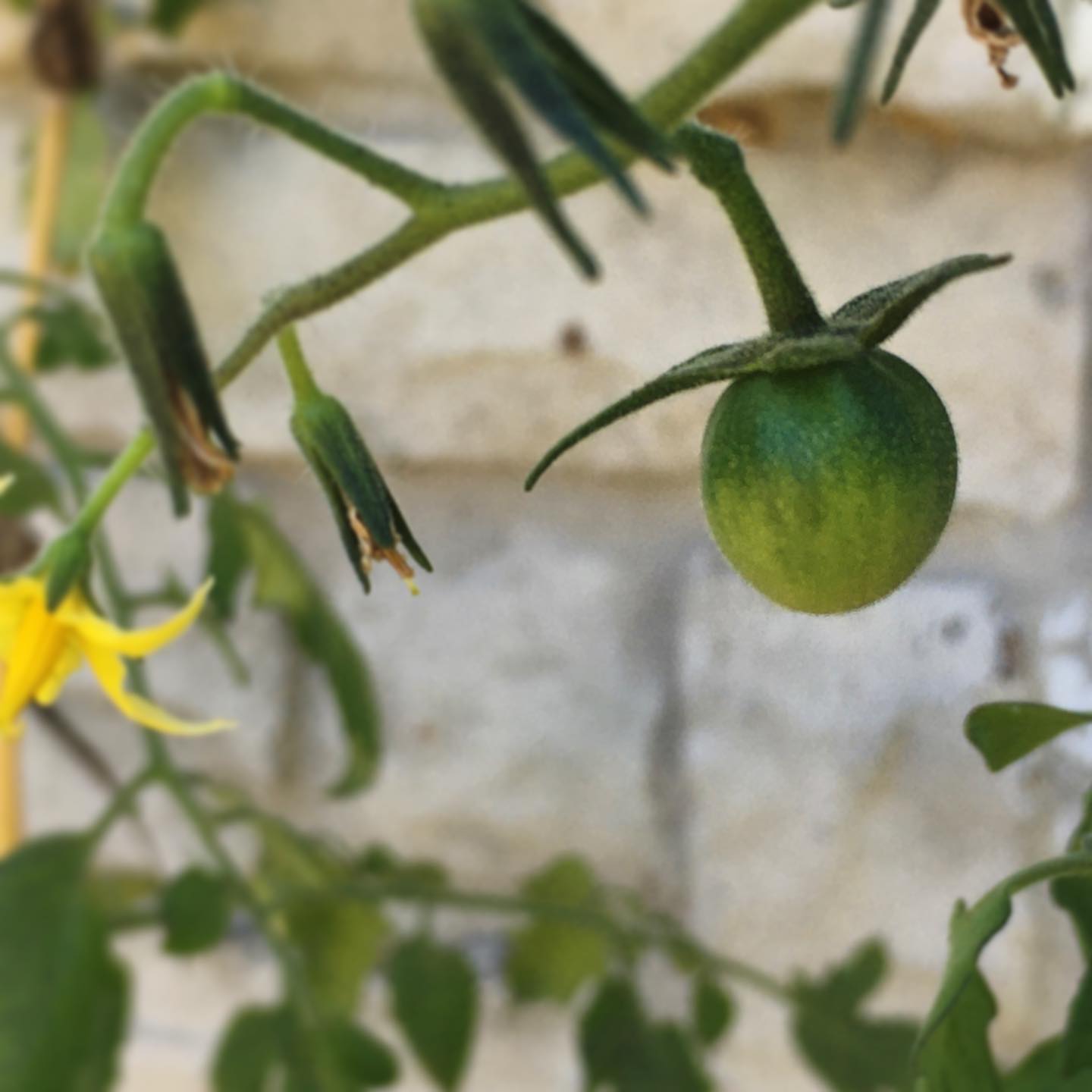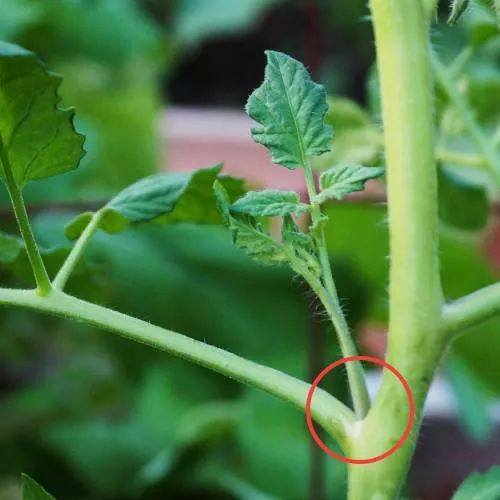
Are your tomatoes slow to ripen on the vine? Are you tired of being stuck with tons of green tomatoes in the fall? If so, you’re not alone. Many gardeners struggle with getting their tomatoes to turn red. In this article, I will share tricks for ripening tomatoes on the vine faster.
Table of Contents
When Do Tomatoes Turn Red ?
The time it takes for tomatoes to turn red depends on various factors, such as the variety and your growing zone. In general, tomatoes should begin turning red about 6-8 weeks after the flowers have been pollinated. However, the specific month when tomatoes ripen for picking can vary depending on different conditions.
Why Aren’t My Tomatoes Turning Red?
There are several reasons why your tomatoes may not be turning red:
1. Temperature
Temperature plays a significant role in the ripening process of tomatoes. If it’s too hot (above 85°F or 29.4°C) or too cold (below 50°F or 10°C), tomatoes won’t turn red. Extreme temperatures, especially during a heatwave, can hinder the ripening process. To mitigate this, you can protect your plants from extreme heat with shade cloth and add a layer of mulch to cool down the soil. The tomatoes will ripen naturally when the weather cools down or warms up again.
2. Plant Is Overgrown
As tomato plants mature, they can become overgrown, focusing more on producing leaves and flowers than ripening tomatoes. Proper pruning is essential throughout the summer to ensure more red tomatoes. By trimming the excess foliage, you allow the plant to direct its energy towards ripening the fruits.
3. Too Many Green Tomatoes

When a tomato plant is covered with small, immature fruits, it can draw energy away from ripening the mature ones. If you find yourself with a bunch of green tomatoes nearing the end of summer, don’t lose hope. There are still tricks you can try to encourage ripening before the arrival of cold temperatures.
How To Turn Green Tomatoes Red
Harnessing the Power of Ethylene
Ever wondered why tomatoes ripen faster when they’re in close quarters with other fruits? It’s all about ethylene, a natural plant hormone that plays a pivotal role in ripening. Let’s explore how to use ethylene to your advantage:

1. The Banana Trick
You’ve probably heard this one before, but it’s a classic for a reason. Bananas are ethylene powerhouses. Here’s what you do:
- Get a ripe banana. The riper, the better.
- Place it in a brown paper bag with your green tomatoes.
- Seal the bag and let ethylene work its magic.
The ethylene gas emitted by the banana will accelerate the ripening process of your tomatoes. Check them daily and watch the magic happen!
2. Apple of Your Eye
Apples are another ethylene-rich fruit that can help your tomatoes turn red faster. Try this:
- Grab a ripe apple.
- Put it in a paper bag with your unripe tomatoes.
- Seal the bag and wait for the ethylene to work its charm.
Your tomatoes will thank you by ripening up swiftly.
The Epsom Salt Elixir
Feeling like your tomatoes need a little boost to ripen faster? Well, here’s a trick that’ll have them turning red in no time. Get ready to mix up the Epsom Salt Elixir!
- Grab a tablespoon of Epsom salt.
- Dissolve it in a gallon of water.
- Use this magical elixir to water your tomato plants.
But why Epsom salt, you ask? It’s all about the magnesium. Magnesium is like a secret agent for fruit development, and it’s the key ingredient here. When your tomato plants get their dose of magnesium, they’ll be well on their way to faster ripening.
Tricks For Ripening Tomatoes On The Vine Faster
Cut Off New Growth
As summer transitions to fall, tomato plants often try to continue growing new vegetation like shoots, stems, and leaves. However, this late season growth is counterproductive to ripening the existing tomatoes.
By cutting off all the new growth, you force the plant to channel its energy and nutrients into maturing and ripening the fruits rather than more foliage.
Use clean, sterilized, sharp pruners or garden scissors to remove any new shoots, stems, or leaves as soon as you spot them. Make cuts at the base where new growth emerges.
Systematically check over the entire plant at least weekly as new growth can emerge rapidly this time of year when daylight hours shorten.
Removing every bit of new growth as soon as it appears prevents the plant from exerting effort and resources on leaves and shoots that have no chance to fully develop.
With nowhere new to devote growth energy, the plant redirects it toward ripening chemical and cell wall changes in existing green tomatoes still on the vines.
Be diligent and consistent with checking for and eliminating new growth to reorient the plant away from vegetation and toward fruit ripening. Doing so can accelerate ripening by up to 2-3 weeks before fall frosts end the season.
Trim Off Flowers

As fall approaches, tomato plants often continue forming new flower clusters and blooms. However, these late blossoms have little chance of setting fruit that will ripen fully before the first frost.
Removing all the flowers and flower buds redirects the energy and nutrients the plant would have spent on fruitlet formation. Instead, that effort goes toward ripening the existing green tomatoes still on the vines.
Use clean, sharp garden pruners or scissors to snip off every flower cluster, bud and bloom down to the main stem. Check the entire plant, including the top vine tips where new blooms tend to form last.
Cutting flowers off requires less energy than having to abort and shed unripe fruitlets later. So flower removal helps accelerate ripening of current tomatoes.
Try to prune flowers as soon as they form, while still in bud stage. The younger they are removed, the more resources are conserved.
Eliminating all flowering essentially tricks the plant into thinking peak season has passed. It responds by focusing entirely on ripening mature sized green fruits waiting on the vines.
Consistency is key – diligently prune off new flowers as soon as they appear to maintain this redirected focus on fruit ripening. Doing so can buy an extra 2-3 weeks of ripening time before frost ends the season.
Prune Some Leaves
Leaves are the food factories of the plant through photosynthesis. But excess foliage can compete for nutrients needed to ripen fruits. Carefully pruning tomato leaves redirects energy to the tomatoes.
Focus on removing leaves that aren’t photosynthesizing efficiently:
- Lower leaves that are shaded or yellowing since they receive less light.
- Inner leaves that are crowding the center and blocking light penetration.
- Leaves touching the ground which can develop fungal diseases.
- Older leaves towards the bottom that are less efficient due to age.
Use sterile pruners or scissors to cut leaves off at the main stems. Make clean cuts to avoid opening the plant to infections.
Only remove up to 15% of leaves at one time so you don’t excessively stunt energy production. Never cut off more than 1/3 of foliage.
Monitor closely after pruning. Ripening rates should accelerate within 2-3 weeks as the plant allocates more resources to the existing fruits.
You can prune overloaded plants up to 2-3 times over the last 1-2 months of the season. Time final pruning no less than 4 weeks before your average first fall frost date.
Avoid pruning after that so plants can maximize food production and focus fully on ripening before frost arrives. With judicious, moderate cutting back of lowest and innermost leaves, you can spur that last flush of ripening.
Pluck Off Tiny Tomatoes
Often small, immature green tomatoes will set on tomato plants even as fall approaches. These tiny fruitlets have almost no chance of reaching full maturity and ripening before the first frost.
By selectively plucking off only the smallest tomatoes, generally those under 1 inch in diameter, you redirect the plant’s resources away from maturing fruits that simply won’t make it in time.
Gently twist and pull the tiny immature tomatoes off the vine and discard them. Be careful not to damage other fruits or the stem.
As you selectively remove the “fruitless” effort of small tomatoes, the plant is forced to channel all that saved energy and nutrients into ripening the remaining larger, more mature green tomatoes.
This is a more active way to improve ripening versus passively leaving the tiny fruitlets on. Removing them eliminates the nutrients lost when they inevitably die on the vine after frost.
Check for and pluck tiny tomatoes every 3-4 days as new blossoms can still set fruit. Focus on immature tomatoes under 1″ only, leaving tomatillos and green cherry tomatoes to continue ripening.
With the plant relieved of its unsuccessful late season fruitlets, you can spur more rapid, healthy ripening of tomatoes with actual ripening potential before frost ends their season.
Pinch Off Suckers

- Suckers are shoots that emerge from the joint between the main stem and leaf petiole (where the leaf meets the stem). They can grow vigorously if left unchecked.
- The goal is to direct all the plant’s energy into fruit production, not extra vegetation. Removing suckers promotes ripening and heavier yields.
- Pinch suckers completely off with your thumbnail and fingernail when they are still small, less than 4 inches long. Twist and pull to avoid breaking stems.
- Check leaf axils weekly as the plants grow. Suckers can emerge quickly, so regular inspection is needed to get them all.
- Late-season suckers closer to the top of plants can be left if the plant looks healthy and open-structured. Removing them all ensures best air circulation.
- It’s best to pinch rather than cut suckers so no wound is created where disease can enter. Discard removed suckers so they don’t root and grow.
- Removing suckers redirects auxins (plant hormones) to existing fruits, improving their color, size, flavor and shelf life for harvest.
Conclusion
There you have it, fellow tomato aficionados! Ripening tomatoes on the vine faster isn’t rocket science, but it does require a bit of know-how and some creative tricks. Whether you’re using the ethylene magic of bananas and apples, embracing the power of sunlight, giving your plants a friendly shake, or ensuring they’re well-fed and cozy, these techniques will have you enjoying your homegrown tomatoes in no time.
So, the next time you’re anxiously eyeing those green orbs on the vine, remember that with a little TLC and a dash of creativity, you can savor ripe, succulent tomatoes that are worth the wait. Happy gardening and even happier tomato feasting! The “Ripening Tomatoes On The Vine Faster” journey awaits—what are you waiting for?
